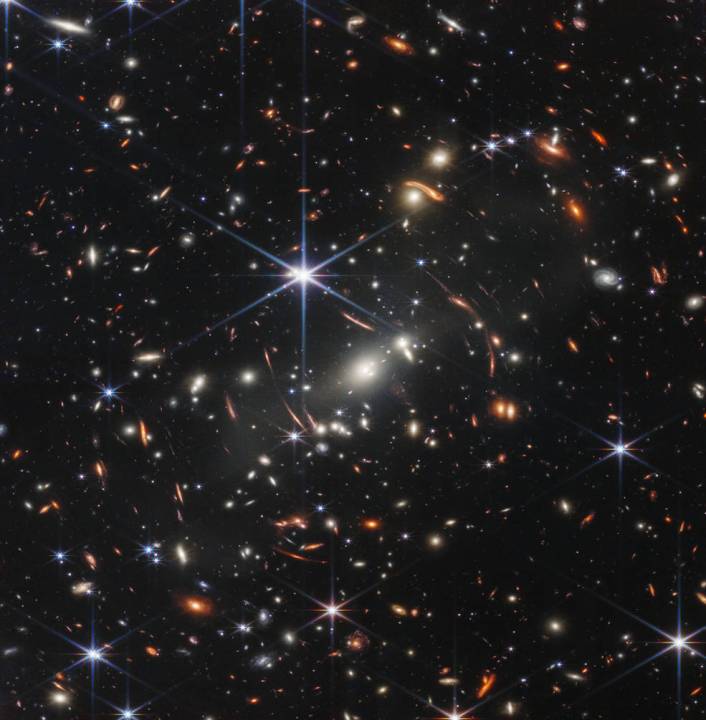After years of planning and months in space, the James Webb Space Telescope has inaugurated a new era in astronomy. NASA today released the first science image from the world’s most powerful space telescope, showing the infrared universe in a depth never seen before.
“From the beginning of history, humans have looked up to the night sky with wonder,” Vice President Kamala Harris said in a briefing. “Now, we enter a new phase of scientific discovery. Building on the legacy of Hubble, the James Webb Space Telescope allows us to see deeper into space than ever before and in stunning clarity.” Harris also acknowledged the contributions of international partners in the building of Webb, which included NASA, the European Space Agency, and the Canadian Space Agency: “This telescope is one of humanity’s great engineering achievements,” she said.

The image shows galaxy cluster SMACS 0723 and is the deepest infrared image of the distant universe to date. It shows the cluster as it would have been 4.6 billion years ago, and because the mass of the cluster is so great it bends spacetime and allows us to see even more distant galaxies behind it. As they are so distant the light is very faint, and these thousands of galaxies are among the faintest objects ever observed in infrared — captured thanks to Webb’s NIRCam instrument in a composite of observations taken over 12.5 hours to pick up this level of detail.
Unlike telescopes like Hubble which look primarily in the visible light range, equivalent to what would be seen by the human eye, Webb’s instruments operate in the infrared. This enables the telescope to look through opaque targets like clouds of dust to see what lies beneath, and it will be used to study nebulae, stars, black holes, and more.
Webb’s instruments are so sensitive that they can observe extremely distant targets, which — because of the time it takes for light to travel from these great distances to Earth — is like looking back in time. Webb will search out some of the earliest galaxies in the universe, helping to elucidate a period called the Epoch of Reionization when the earliest stars spread light through the universe for the first time.
Deep field images like the one shown above help in the quest to find the earliest galaxies by identifying extremely distant galaxies in dim patches of the sky. Similar images will be produced by deep and wide surveys made using Webb, such as the upcoming COSMOS-Webb program.
The image released today is just a teaser of all that is to come from Webb. More images will be released tomorrow, including images of nebulae and a galaxy group, as well as a spectrum showing the composition of the atmosphere of an exoplanet. And there will be plenty more topics that Webb will study in its first year as well, giving astronomers glimpses into topics as wide-ranging as how stars are formed, the composition of comets in our solar system, and how the first black holes formed.



